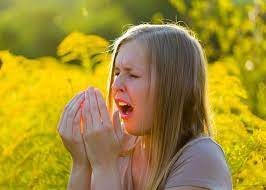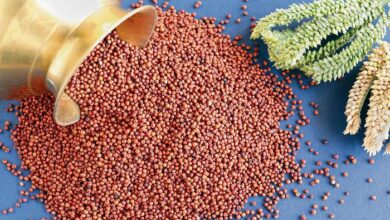Understanding Causes, Symptoms, and Effective Treatments for Weather-Induced Allergic Reactions in Children’s Seasonal Allergies
Children often worry about seasonal allergies, or allergic rhinitis, especially when the weather is changing. These allergies are often brought on by airborne substances like pollen, mold spores, pet dander, and dust mites, which are more common at certain times of the year. The causes of seasonal allergies in kids, how to spot the symptoms, and the best management and treatment strategies will all be covered in this article.
How do seasonal allergies work?
When a child’s immune system responds to allergens in the air, they experience seasonal allergies, commonly known as allergic rhinitis or hay fever. These allergens may include pet dander, mold spores, dust mites, and pollen from weeds, grasses, and trees. These allergens, when breathed, set up an immunological reaction that results in symptoms including runny nose, itchy eyes, and throat discomfort.
2. Common Roots of Childhood Seasonal Allergies
Parents and other caregivers must be aware of the typical causes of seasonal allergies in children in order to take the proper preventative steps. Among these triggers are:
During the spring and autumn, when trees, grasses, and weeds discharge pollen into the air, it is a common allergy. These particles might be inhaled by kids and cause allergic responses.
Mold Spores: Mold spores are popular allergy triggers because they are widespread in moist, humid settings, particularly after rain or in locations with high humidity.
Dust mites are tiny insects that live in beds, soft furnishings, and household dust and are a major contributor to allergy responses in children.
Pet Dander: Children who are allergic to pets may also have allergic reactions to the proteins in pet skin cells, urine, and saliva, particularly if they have frequent intimate contact with animals.
3. Recognizing Seasonal Allergy Symptoms
Understanding how children’s seasonal allergies manifest is essential for quick and effective therapy. Typical signs include:
Frequently sneezing and a runny or clogged nose are common symptoms of seasonal allergies in kids, and they may be annoying and persistent.
Itchy, Watery Eyes: Allergic responses may result in itching, redness, and excessive tears in the eyes, which can be upsetting and uncomfortable.
Coughing and Throat Irritation: Postnasal drip from allergies may also cause a chronic cough and throat irritation.
weariness and Irritability: Children with allergies may experience greater weariness and irritability due to their ongoing discomfort and disturbed sleep.
4. Strategies for Treating Children’s Seasonal Allergies
Children with seasonal allergies may be managed via a mix of medication options and prevention strategies. These consist of:
Avoiding allergies: By utilizing air purifiers, keeping windows closed during high pollen seasons, and maintaining a clean living space, parents and other caregivers may reduce a child’s exposure to allergens.
Medication: Nasal sprays, decongestants, and antihistamines may all help with allergy symptoms. But before giving any medicine to a youngster, it’s crucial to speak with a medical expert.
Immunotherapy Allergy injections: In extreme situations, allergists may advise allergy injections to help desensitize a child’s immune system to certain allergens, lowering the intensity of allergic responses over time.
5. Speaking with a Medical Expert
It’s important to get advice from a healthcare provider if you think your kid may be experiencing seasonal allergies. Pediatricians or allergists may do tests to identify certain allergies and create an individual treatment plan to properly manage your child’s symptoms.
Understanding the origins and effects of seasonal allergies in children gives parents and other caregivers the capacity to take proactive measures to improve the child’s quality of life and reduce suffering, particularly during seasonal changes.
In conclusion, allergies to seasonal triggers including pollen, mold spores, dust mites, and pet dander may have a serious negative influence on a child’s health. Understanding the signs and symptoms and using successful management techniques may significantly improve how well children with allergies are managed. It is crucial to seek the advice of a healthcare expert for an accurate diagnosis and a customized treatment strategy.







